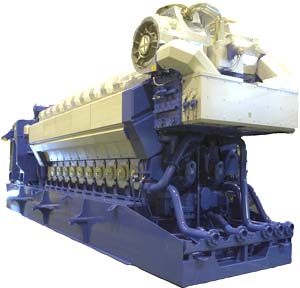Ocean Infinity Resumes Hunt for MH370 in Remote Indian Ocean
More than a decade after Malaysia Airlines Flight MH370 vanished with 239 people aboard, a renewed search effort has officially begun in one of the world’s most remote maritime regions,...

Wärtsilä introduced a more powerful version for marine applications of its Wärtsilä 32 engine. The engine was first introduced in the 1980s, and to date more than 4000 units have been sold to the marine industry alone. The Wärtsilä 32 engine is a choice for both the marine and land-based power plants markets. In the marine industry the engine is used for both main engine and auxiliary engine applications. It is typically selected to power different types of tankers, container vessels, and offshore support and drilling vessels, while in the cruise and ferry sector, the Wärtsilä 32 is the most favored engine of its size. In auxiliary electric production, the Wärtsilä 32 is widely utilized in all vessel categories where high auxiliary load is needed. The new, upgraded version is available with an increased power output of 580 kW per cylinder at 750 rpm (50 Hz version). This represents a 15 percent increase in power output over the earlier 32 engine, despite having the same external dimensions. This increased output means that the Wärtsilä 32 now covers a power range from 3 MW to 9,3 MW. One area where this new power output is of particular interest is in the offshore drillship market. It is felt that in combination with Wärtsilä’s Low Loss Concept, the new engine can offer a powerful yet compact package for diesel electric propulsion.
The Wärtsilä 32 engine is fully equipped with all essential ancillaries, and has a thoroughly planned interface for the plant or ship’s control system. This ensures easy installation and reliable engine operation.
The engine is designed to operate efficiently and economically on low sulphur fuels (<0.1% S), making it suitable for operation in emission-controlled areas. It can also be equipped with a SCR catalyst, such as the Wärtsilä NOR (nitrogen oxide reducer), which can reduce NOx emissions by as much as 95 percent. This means that, already today, the machinery is IMO Tier III compliant. The standard Wärtsilä 32 entirely fulfils IMO Tier II regulations. Regardless of the fuel used, the consumption efficiency is consistently excellent over a wide load range.

Sign up for gCaptain’s newsletter and never miss an update

Subscribe to gCaptain Daily and stay informed with the latest global maritime and offshore news
Essential news coupled with the finest maritime content sourced from across the globe.
Sign Up